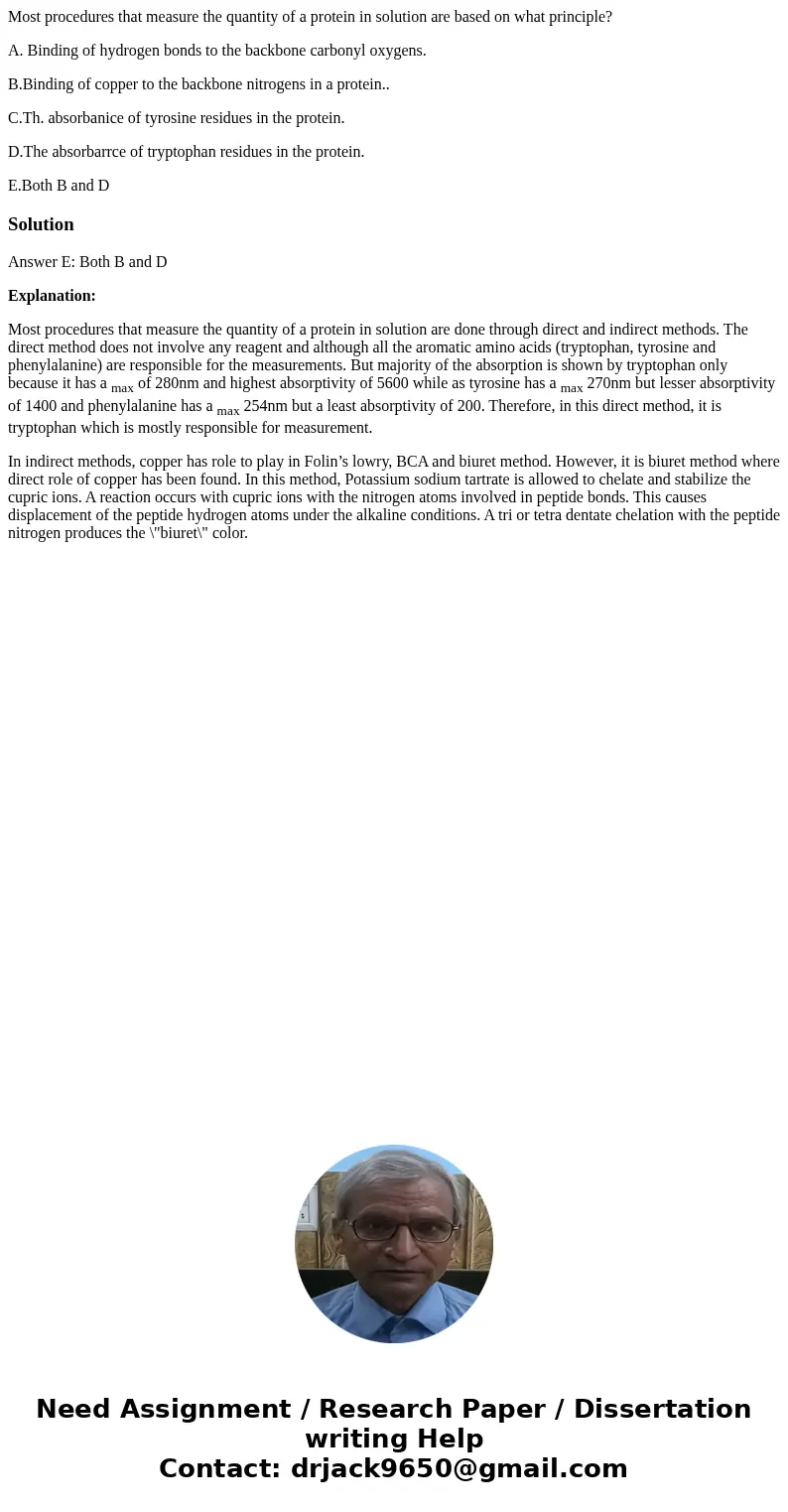Most procedures that measure the quantity of a protein in so
Most procedures that measure the quantity of a protein in solution are based on what principle?
A. Binding of hydrogen bonds to the backbone carbonyl oxygens.
B.Binding of copper to the backbone nitrogens in a protein..
C.Th. absorbanice of tyrosine residues in the protein.
D.The absorbarrce of tryptophan residues in the protein.
E.Both B and D
Solution
Answer E: Both B and D
Explanation:
Most procedures that measure the quantity of a protein in solution are done through direct and indirect methods. The direct method does not involve any reagent and although all the aromatic amino acids (tryptophan, tyrosine and phenylalanine) are responsible for the measurements. But majority of the absorption is shown by tryptophan only because it has a max of 280nm and highest absorptivity of 5600 while as tyrosine has a max 270nm but lesser absorptivity of 1400 and phenylalanine has a max 254nm but a least absorptivity of 200. Therefore, in this direct method, it is tryptophan which is mostly responsible for measurement.
In indirect methods, copper has role to play in Folin’s lowry, BCA and biuret method. However, it is biuret method where direct role of copper has been found. In this method, Potassium sodium tartrate is allowed to chelate and stabilize the cupric ions. A reaction occurs with cupric ions with the nitrogen atoms involved in peptide bonds. This causes displacement of the peptide hydrogen atoms under the alkaline conditions. A tri or tetra dentate chelation with the peptide nitrogen produces the \"biuret\" color.

 Homework Sourse
Homework Sourse